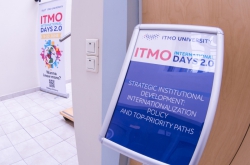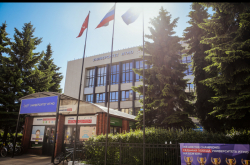Web of Science and InCites
Web of Science is, in essence, a research tool. It’s commonly used to search for references, active authors and institutions, and for journals in which to publish an article. A scientist has to use it on a nearly everyday basis. InCites is a tool for analysis, assessment, and comparison. It helps to analyze trends, compare authors, and evaluate one’s scientific performance. Once a year, the Clarivate Analytics company, which owns Web of Science and InCites, publishes a list of top-cited authors, which is often used by the creators of various international rankings.

Highly Cited Papers
What are highly cited papers? Those are Web of Science entries that have been published in the past decade and have ended up in the top 1% of most commonly cited papers in their respective subject field and year of publication.
Why Do They Matter?
Rankings
In terms of bibliometrics, highly cited papers are an excellent indicator, primarily because they are finite in number. Every year, Web of Science receives approximately 2 million new publications from journals and conferences. If we were to try and determine the world’s most cited author simply using the entire database, we would most likely fail. The amount of data is just too massive.

But if we were to take the top 1% of all publications, which is some 20,000 out of every year’s 2 million, this becomes a much more realistic task. When the list is published, various rankings agencies utilize it in their rankings.
Keeping Up
This sort of analysis is good not just for rankings, but also for learning about modern scientific trends, as well as making sure your university is dedicating enough efforts to cutting-edge research.
InCites also has a tool called “Research Fronts”. A research front is a cluster of highly cited papers created using a special algorithm, and it helps identify the hottest topics in present-day science.
Each year, the company, based on their analysis, makes their predictions for the laureates of the next Nobel Prize. This year, they got four of them right; since 2002, when they first published their forecast, the company has made 50 correct guesses.

Top Authors
Many authors featured on the list have profiles on ResearcherID, ORCID or Publons; in addition, most of them have personal pages on their institutions’ websites. This is most helpful to academic recruiters or those involved in bibliometrics. Looking through the list, you can pick out researchers who are of most interest to your organization – and vice-versa. After that, you can get in touch with them and discuss collaboration.
Rising Stars
But there is a drawback to the method above. Highly cited researchers are in high demand and thus it’s a challenge to attract them to your particular cause; and even then, there’s no guarantee it’ll be worth the effort. Which is why it makes sense to look for young promising scientists instead.

Summing Up
Of course, you could just “buy up” enough highly cited researchers, purely for rankings purposes, but it’s important to remember that it may only make your research worse. That’s why it’s a much better choice to look for new promising authors. And, finally, do not forget that you raise your own talent. Remember who writes the most highly cited works at your university and support those researchers.





